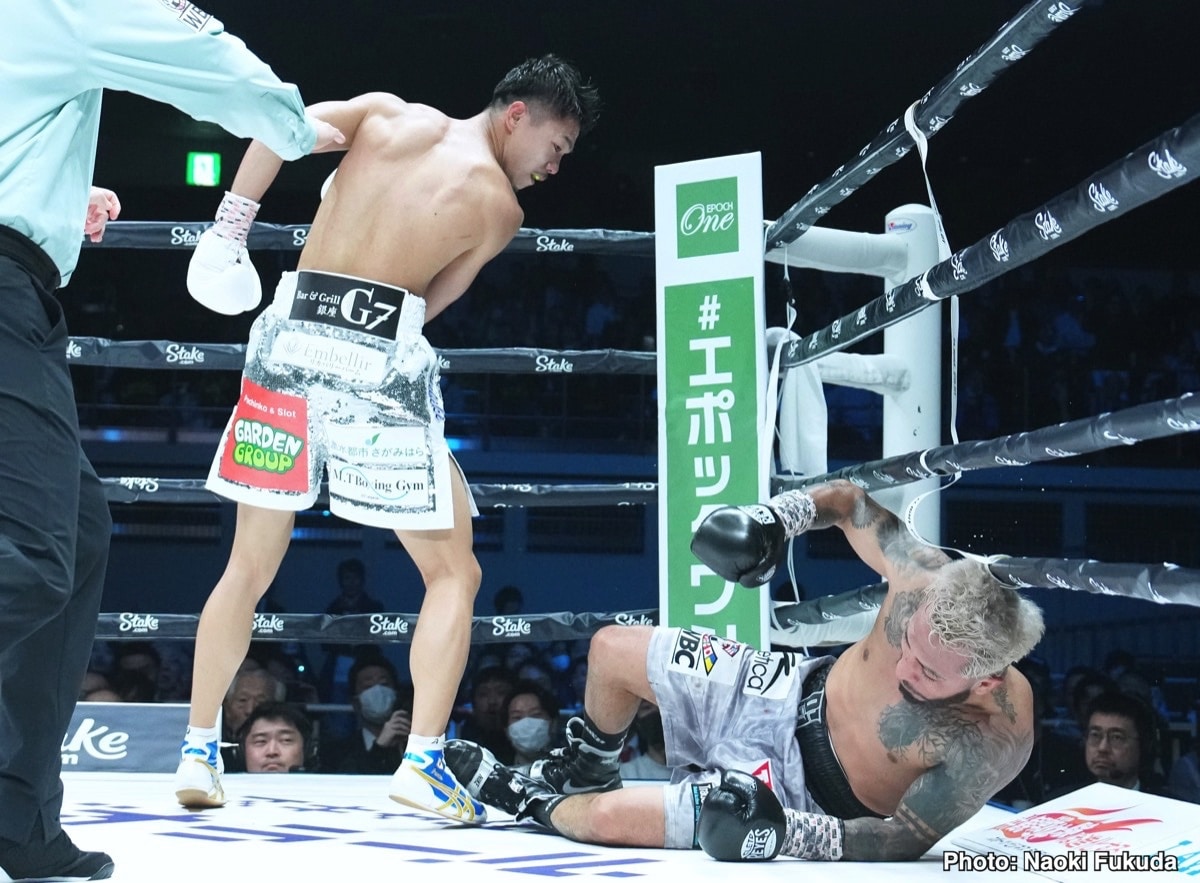It’s said the term, ‘pound-for-pound best in boxing,’ was invented for the benefit of, and as a result of the sheer majesty of, Sugar Ray Robinson. Back when the man born Walker Smith Jr was at his blinding, priming, and peaking best, the gathered experts felt strongly that Robinson, who could do it all, would have done so at any weight had he been mythically reduced or had he been grown to any other weight (Sugar Ray, of course, scorching everything and anything he faced at both welterweight and middleweight).
Since the inception, we fight fans, boxing fans, have been almost constantly debating the current P-4-P lists – who deserves to be ranked at the top or close to the top, and who has no business being there but is somehow put there anyway?
This brings us to the simply fantastic card boxing fans were treated to this past Saturday (Feb. 24) in Tokyo, Japan. Three world title fights took place, with each fight proving well worth watching with some quite astonishing skills witnessed.
But while Japanese stars for a reason, Kosei Tanaka and Takuma Inoue both won great fights in looking great, with both either winning another word title (in the case of Tanaka) or retaining one (in the case of Inoue) – the absolute shining star of the show was Junto Nakatani.
Nakatani is an immensely blessed southpaw, a man who seemingly does it all, throwing sharp and accurate punches with both hands and displaying superb timing and accuracy. with Nakatini launching zinging power shots, Nakatani has also shown that he has the defensive reflexes of a cat. Oh, and the 26-year-old has never once shown even the slightest sign of being tired in a fight. Add it all up, and it sounds like Sugar Ray!
High praise, a lofty comparison for sure, but the term pound-for-pound seems to be one that perfectly suits Nakatani, just the way it was invented for the original Sugar Ray. Like the greatest to ever do it, Nakatani has gone through some weight divisions, and he has done so with ruthless efficiency. Not held back or made to wait his turn for a shot at gold the way Robinson was, Nakatani won his first world title in his 21st outing. Since then, Nakatani, who might not be at his peak yet (and there’s a scary thought for each and every bantamweight out there right now), has gone from strength to strength.
A three-weight champ now and perfect at 27-0(20), Nakatani may never taste defeat. That’s how good he looks, how good, or great, absolutely great, as he has shown himself to be. To repeat, Nakatani seems to have zero flaws. He can punch with venom with either hand, he has untimely speed, Nakatani has textbook balance and accuracy, and Nakatani has quite brilliant defense – just look and see how he can make a punch skim his chin by a fraction before he then strikes back in kind. Honestly, this, along with Nakatani’s ability to land a shot that cannot be seen without the aid of instant replay, is something to behold.
Nobody can say Nakatani“hasn’t fought anybody.” Some have hurled this quite ridiculous claim at Junto’s countryman, Naoya Inoue. Look at Nakatani’s record: only three men faced who had a losing record, these early in Nakatani’s pro career, numerous fighting styles beaten, numerous world champions defeated, good men taken out with apparent ease, inside the distance.
Yeah, Nakatani is a special one; look at his dominant wins over Angel Acosta, Ryota Yamauchi, Andrew Moloney, and, last time out, in what can only be described as an utterly flawless display of The Sweet Science, Alexandro Santiago.
And to also repeat, Nakatani may be some years from his peak, his absolute best performances. Sure, the compiling of any Top 10 pound-for-pound list is never an easy thing, and today, we have stupendous fighters like Tank Davis, Canelo Alvarez, Devin Haney, Terence Crawford, Naoya Inoue, Shakur Stevenson, and others all vying for a spot on the mythical list.
But for anyone to not find room for Junto Nakatani, after all, he has done so far (not taking into consideration what he will no doubt go on to do in the near future), is proof that this person does not fully understand what the term ‘pound-for-pound best in boxing’ actually means.

